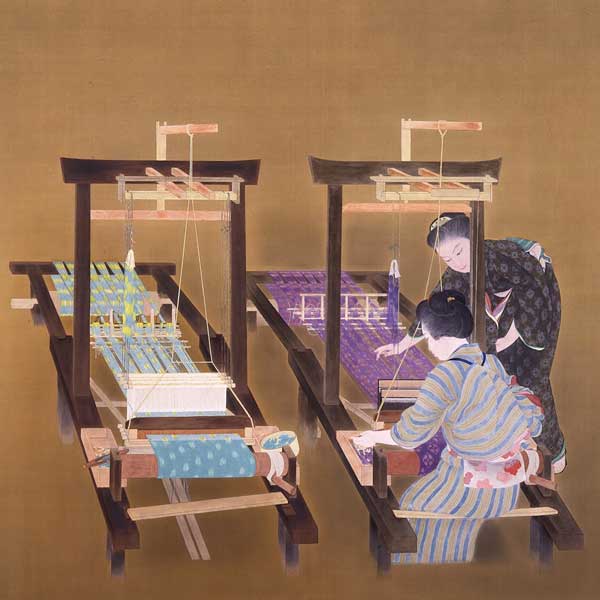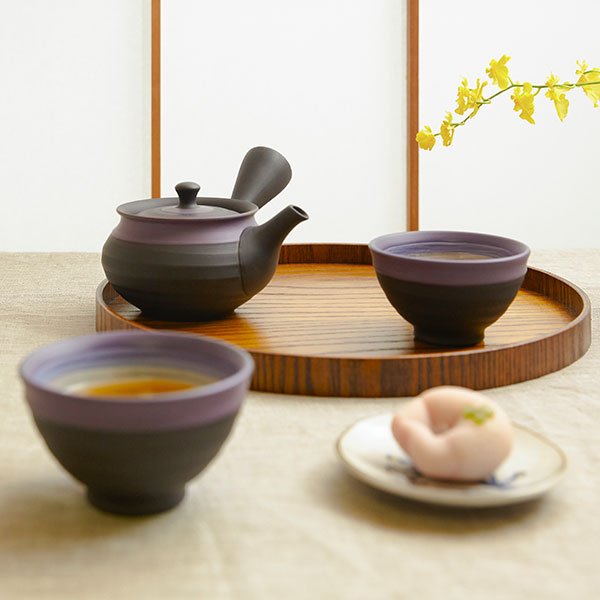Kiyosumi Garden: Tokyo’s Most Beautiful Japanese Garden?
by Lucy Dayman | TRAVEL
© Kiyosumi Garden, Stepping Stones
Kiyosumi Garden, also known as Kiyosumi Teien 清澄庭園, is one of the most naturally beautiful and historically significant Japanese gardens in Tokyo. Throughout the history of the city, Kiyosumi has lived a hundred lives. It's been a private sanctuary, a place of public refuge and an officially designated place of scenic beauty. Today it’s one the best places to relax in Tokyo! To learn a little more about this stunning, and somewhat overlooked garden, here's everything you need to know about Kiyosumi Garden.
A Quick History of a Tokyo Landmark
© Kiyosumi Garden, Stone Lantern in Kiyosumi Garden
The area was first encompassed by the growing city of Edo (today’s Tokyo) in the 17th century when it came into the possession of a wealthy merchant, Kinokuniya Bunzaemon (1669-1734). It was purchased by the feudal lord Kuze Yamatonokami, who built his mansion on the site in 1721.
In 1878 the area surrounding - and including - the garden and was bought by Iwasaki Yataro, the founder of Mitsubishi. He repurposed the space to become a recreation area, park for his employees and entertaining space for the company’s distinguished guests. It was at this time Kiyousumi came to be the circuit style park we see today.
Like many fine Japanese gardens, Kiyosumi gives the sense of untouched nature, but as is also the case with nearly all such gardens, the landscape is entirely artificial. The park as we see today was constructed in the 1880s including the addition of the central pond, man-made hilly inclines and the many exotic rocks located around the place. Early in its life, the water that filled the pond was diverted from Tokyo’s nearby Sumida River.
During the Great Kanto Earthquake of 1923, Kiyosumi became a point of refuge for many of the area’s citizens. Relatively undamaged by the historic disaster, the less damaged eastern half of the park was donated to the city by the Iwasaki family. Following restoration work, the park was then opened to the public as Kiyosumi Gardens in 1932. It took up the role of refuge for local residents again during the bombing of Tokyo in the second world war.
© Kiyosumi Garden, Place of Scenic Beauty
In 1979, the park was named a designated place of scenic beauty by the Tokyo Metropolitan Government. Since then it’s remained one of Tokyo’s most beautiful and important public spaces. “The beauty of Japanese Kiyosumi Garden embodies our Japanese spirit,” explains park manager Naoo Inoue, one of the park’s key staff members. “It physically represents how we feel about beauty and what we think about nature.”
Elements of Kiyosumi Japanese Garden
The park as a whole comprehensive landscape is incredibly beautiful. But to best appreciate the intricacies of this stunning Tokyo garden, you can break it down into seven key elements. You can find out more about Japanese garden design at 5 Types of Authentic Japanese Garden.
1. The Lake
© Kiyosumi Garden, Dai-sensui
Dai-sensui is the large central pond and the park’s most immediately striking figure. Inside the pond sit three inlets which are said to resemble the shadowed shapes of the birds that reside in the area. The pond is also home to a busy community of incredibly large koi fish. “Up until two years ago,” explains Inoue “people used to come and feed the koi, so they grew very big, but now it’s no longer allowed.” As you stroll along the water many of the more eager koi follow the shadows of the park’s guests “I think they remember that people used to feed them,” laughs Inoue.
2. Stepping Stones
© Kiyosumi Garden, Stepping Stones
Dotted along the pond’s surface you’ll find iso-watari, known in English as stepping stones. These large stones - positioned on the shallow cusp of the pond - offer a new, unique way to view the stunning landscape of the garden.
3. Rocks
As you stroll you’ll find large stone formations meticulously arranged throughout the garden. Many of these stones were collected from locations throughout Japan by the Iwasaki family, and are admired for their uniquely beautiful properties. The stones are all utilized for different purposes: there are stones that represent dry waterfall landscapes, stepping stone pathways, and decorative stones.
4. Stone Monument
The stone monument of Basho’s Haiku is both a part of the impressive stone collection, but a notable feature of the garden itself. Engraved into its large open face is one of Japan’s most famous haiku written by Matsuo Basho known in English as ‘The Sound of a Frog Jumping into an Old Pond.’
古池や Furu ike ya To an old pond
蛙飛び込む Kawazu tobikomu A frog leaps in.
水の音 Mizu no oto The sound of water.
5. Mountain
© Kiyosumi Garden, Yukitsuri, Protecting Pine Trees from Winter Snow
Another piece of iconic Japanese imagery, the garden is home to its own miniature version of Mount Fuji. “You’ll see most Japanese gardens have a mountain,” explains Inoue, “it’s a dedication to Fuji San.” Before the great earthquake, the summit of the mountain was bare, however, in more recent times, shrubs and azealia trees have been planted as a way to represent clouds hovering around the mountain base.
6. Taisho Memorial Hall
© Kiyosumi Garden, Taisho Memorial Hall
The last two major elements of the part are its architectural features. The Taisho Kinenken is the park’s more contemporary-style building. It was initially used as a funeral hall for the service of Emperor Taisho. Although it was devastated by fire during WWII, the current incarnation of the hall was reconstructed in 1989, and is now available to rent as an assembly hall and hosts major events and gatherings.
7. Ryotei Tea House
© Kiyosumi Garden, Ryotei Teahouse
The Ryotei tea house sits on the middle of the park, looking out onto the garden like a shining jewel in the crown of Kiyosumi. It was originally built by the Iwasaki family in 1909 as an entertainment spot, for guests including Marshal Kitchener of Britain, who visited in 1911. Luckily it the Ryotei escaped any major damage during the wars and disasters of the 20th century, but was also extensively renovated in 1985. Today guests can admire the beauty of the teahouse inside too, and order matcha tea and traditional Japanese sweets. It is only open during select times, however, so be sure to check ahead of time and book in advance to avoid disappointment.
When to Visit Kiyosumi Garden
© Kiyosumi Garden, Cherry Blossom in Kiyosumi Garden
One of the most beautiful times of year to visit Kiyousumi is during spring when the water starts to get a little warmer, and the landscape comes into full bloom. “We have four kinds of cherry blossom trees on site,” says Inoue, “so the end of March through to April and early May is the busiest season for us.”
As well as cherry blossoms, there are many other seasonal sights to keep a lookout for during this time of year. “When it’s starting to get warm a lot of the turtles start to come out of hibernation.”
Snow in Kiyosumi Garden
If you can’t make it in time for spring, the beautiful evergreen pine trees make it an ideal place to explore any time of year. The team makes sure the trees are immaculate no matter the season, “We have 200 pine trees and only five gardeners” explains Inoue, “so they’re very busy.”
A little less central than some of the city’s other major Japanese style strolling gardens, Kiyosumi is less well known, but that’s a large part of its charm. It’s intricate design, and rich, evolving history means makes it a rewarding place to explore time and time again.
“We often get local people who come and visit regularly,” says Inoue, who himself is still enthralled by the park’s diverse beauty. “I've been working here for a few years, and I walk around the park every day; in the early morning, after lunch and the end of the day. But I still feel like I’m always discovering something new.”
If you're looking for a little hidden paradise, a taste of Japanese history, or just a place to unwind and detach from the manic energy of inner-city living, be sure to pay a visit to Kiyosumi Gardens. Also, if you’re wanting to dive a little deeper into the world of Japanese history while you’re there, the Fukagawa Edo Museum is just a five-minute walk from the park.
How to Get to Kiyosumi Garden
© Kiyosumi Garden, Spring in Kiyosumi Garden
Name: 清澄庭園 Kiyosumi Tei-en
Address: Kiyosumi Teien, 3 Chome, Koto City, Tokyo (see map)
Hours: 9am to 5pm, with last entry at 4:30pm. Closed December 29-January 1. Entry is ¥150 for adults (about $1.40). See more information here.
Transport: The garden is a three-minute walk south of Kiyosumi-Shirakawa Station. You can get there via the Hanzomon and Oedo Subway Lines. From Shinjuku Station, take the Oedo Subway Line heading towards Iidabashi from Shinjuku Nishiguchi Station. From the station to the park the trip takes 25 minutes and costs ¥270 each way.
For more Tokyo gardens, check out 3 Classic Japanese Gardens in Tokyo You Can’t Miss! If you’re in the US, consider these 5 Great Reasons to Visit Portland Japanese Garden.













TRAVEL | March 15, 2024